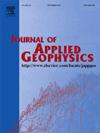利用地震属性对爱琴海İzmir湾冷渗漏进行多分辨率地震分析
IF 2.2
3区 地球科学
Q2 GEOSCIENCES, MULTIDISCIPLINARY
引用次数: 0
摘要
本研究的主要目的是利用多分辨率地震资料对浅层气藏和天然气渗流的浅层和深层结构进行表征。此外,通过使用各种地震属性,如平均能量、相对声阻抗、表观极性、甜度、伪起伏以及复杂的痕迹属性,试图建立İzmir海湾外部天然气聚集和渗流的浅层和深层地层之间的联系。对多分辨率地震数据集进行了集体解释,以获得İzmir外海湾天然气构造的深层和浅层结构。啁啾和火花地震资料提供了浅层天然气聚集和渗漏构造的信息,而多道地震资料揭示了深层构造和地层形成及其与浅层流体流动构造的可能联系。地震资料分析和多属性剖面计算结果表明,İzmir湾外区生物气和热成因气共存。结论认为,Uzunada断裂带是流体逸出的管道,有利于天然气在断裂面上方的水柱中渗漏。具体来说,2008年和2023年获得的Chirp数据集表明,沿Uzunada断裂带的天然气渗漏沿该断裂面已经活跃了15年。根据对地震资料的分析,将观测到的天然气按其成因分为两类:(1)格迪兹三角洲高地沉积物中原位生成的生物气;(2)上中新世沉积物中深层储层的热成因气。认为海湾东部三角洲沉积物中的天然气是由格底斯河输送的陆源沉积物中的有机质生物降解而形成的。另一方面,可能的热成因气藏起源于上中新世沉积物中假定的砂质层与页岩层状互层,并沿断裂面运移至上第四纪沉积物中,并聚集在浅层沉积物中。本文章由计算机程序翻译,如有差异,请以英文原文为准。
Multi-resolution seismic analysis of a cold seep from İzmir Gulf, Aegean Sea using seismic attributes
This study primarily aims to characterize both the shallow and deep structures of shallow gas accumulations and gas seepage by utilizing multi-resolution seismic data. Additionally, it seeks to establish a link between shallow and deep stratigraphy for these gas accumulations and seepage in the outer İzmir Gulf by employing various seismic attributes, such as average energy, relative acoustic impedance, apparent polarity, sweetness, pseudo-relief as well as complex trace attributes. Multi-resolution seismic datsets have been collectively interpreted to obtain deep and shallow architecture of gassy structures in the outer İzmir Gulf. Chirp and sparker seismic data provided information about the shallow gas accumulations as well as seep structures while multi-channel seismic data reveals deep structural and stratigraphic formation and their possible connection with the shallow fluid-flow structures.
Analyses of seismic data and calculated multi-attribute sections indicate that both biogenic and thermogenic gases co-exist in the outer İzmir Gulf. It is concluded that Uzunada Fault Zone acts as a conduit for fluid escape, facilitating gas seeps in the water column above the fault plane. Specifically, the Chirp datasets acquired in 2008 and 2023 indicate that the gas seep along the Uzunada Fault Zone has been active over a period of 15 years along this fault plane.
Depending on the analyses of seismic datasets, observed gas is classified into two groups in terms of its origin: (1) Biogenic gas generated in-situ within the highstand sediments of the Gediz Delta, and (2) thermogenic gas from deeper reservoirs within the Upper Miocene sediments. It is concluded that the gas from the deltaic sediments in the eastern part of the gulf is biogenic in origin formed as a result of the biogenic degradation of organic matter in terrigenous sediments transported by the Gediz River. The possible thermogenic gas accumulations, on the other hand, is originated from the presumed sandy layers interbedded with shale laminations in the Upper Miocene sediments, and migrate along the fault planes through the Plio-Quaternary sediments and accumulate in the shallow sediments.
求助全文
通过发布文献求助,成功后即可免费获取论文全文。
去求助
来源期刊

Journal of Applied Geophysics
地学-地球科学综合
CiteScore
3.60
自引率
10.00%
发文量
274
审稿时长
4 months
期刊介绍:
The Journal of Applied Geophysics with its key objective of responding to pertinent and timely needs, places particular emphasis on methodological developments and innovative applications of geophysical techniques for addressing environmental, engineering, and hydrological problems. Related topical research in exploration geophysics and in soil and rock physics is also covered by the Journal of Applied Geophysics.
 求助内容:
求助内容: 应助结果提醒方式:
应助结果提醒方式:


